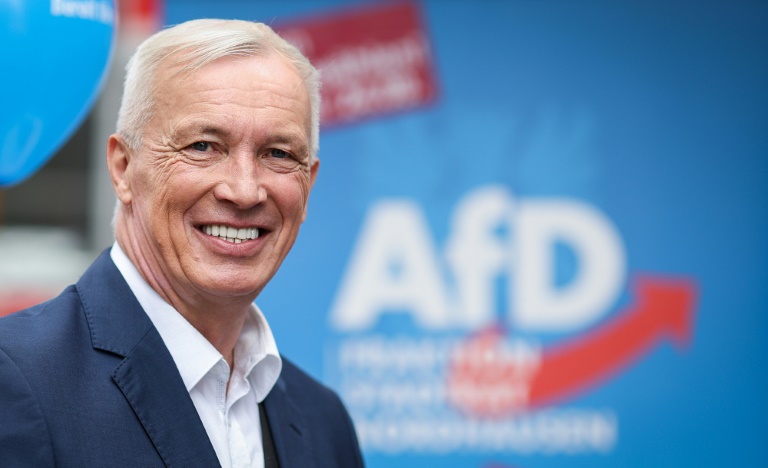Concern was growing for ethnic Armenians in Nagorno-Karabakh on Sunday as Azerbaijani forces tightened their grip on the breakaway region.
If the new ceasefire there holds, it could mark the end of a conflict between the Christian and Muslim Caucasus rivals that has raged, off and on, through the three decades since the collapse of the Soviet Union.
But the years of fighting in Nagorno-Karabakh have been marked by abuses on both sides and there are fears of a new refugee crisis.
US Secretary of State Antony Blinken told Armenian Prime Minister Nikol Pashinyan that Washington had “deep concern” for ethnic Armenians there, in a phone call Saturday, a spokesman said.
At the UN General Assembly in New York, Armenian Foreign Minister Ararat Mirzoyan called for a UN mission to monitor treatment of ethnic Armenians in the mountainous region.
But for Baku, Foreign Minister Jeyhun Bayramov told the General Assembly: “Azerbaijan is determined to reintegrate ethnic Armenian residents of the Karabakh region of Azerbaijan as equal citizens.”
A US congressional delegation was in Armenia to show support for the embattled Pashinyan and to inspect the region’s blockade.
“Certainly people are very fearful of what could be occurring in there,” Senator Gary Peters of Michigan told reporters at the border on Saturday.
“I think the world needs to know exactly what’s happening.”
He used binoculars to look across the border towards Russian peacekeeper positions, as Azerbaijani trucks transported material for a new highway being built as the government secures the region.
As the first Red Cross aid convoy crossed into the disputed enclave since Azerbaijan launched last week’s lightning offensive, government forces there said rebel “demilitarisation” had begun.
Ethnic Armenian separatist fighters began surrendering weapons under a Russian-mediated agreement on Friday, said Moscow.
On Saturday, the Azerbaijan forces showed off part of the captured rebel arsenal: sniper rifles, Kalashnikov rifles, rocket-propelled grenades and four tanks painted with cross insignia.
Baku’s forces now control the district of Shusha, and the town of the same name appears deserted.
Troops have mortar positions on high ground overlooking the approach to the nearby regional capital Stepanakert, AFP reporters saw.
They also control the so-called Lachin Corridor to the southwest, that once connected the breakaway region to Armenia. Baku has mounted a de facto blockade there for the past nine months.
In the Armenian border town of Kornidzor, civilians were gathered at the last checkpoint before Azerbaijani territory, hoping for news of relatives.
“I’ve been here for three days and nights, sleeping in my car,” said 28-year-old Garik Zakaryan, as displaced Armenians borrowed a soldier’s telescope to scan a village across the valley.
Zakaryan got his family out in December, three days before Azerbaijan blockaded the area, but he was worried for friends and family still across the border.
Zara Amatuni, local spokesman for the International Committee of the Red Cross, told AFP that 70 metric tonnes of food and humanitarian aid had passed along the Lachin Corridor.
In a hint of the bad blood between the sides, Azerbaijan’s defence ministry on Saturday accused Karabakh Armenians of setting fire to their homes in one village to keep them from Baku’s advancing troops.
Some villagers also set fire to their homes before fleeing after Azerbaijan first began to re-establish control over parts of Nagorno-Karabakh in a six-week war in 2020.
Russia said an Azerbaijani soldier had been “wounded during an exchange of fire”. It was investigating the incident with Baku and separatist officials, it added.
They say they are discussing how citizens’ access to and from Nagorno-Karabakh, where up to 120,000 ethnic Armenians live, will work.
AFP

AFP







